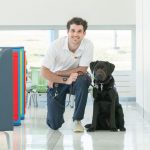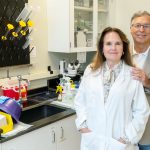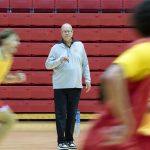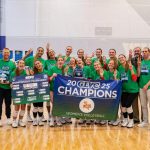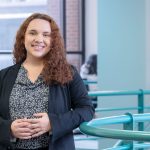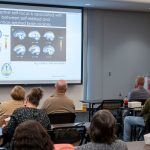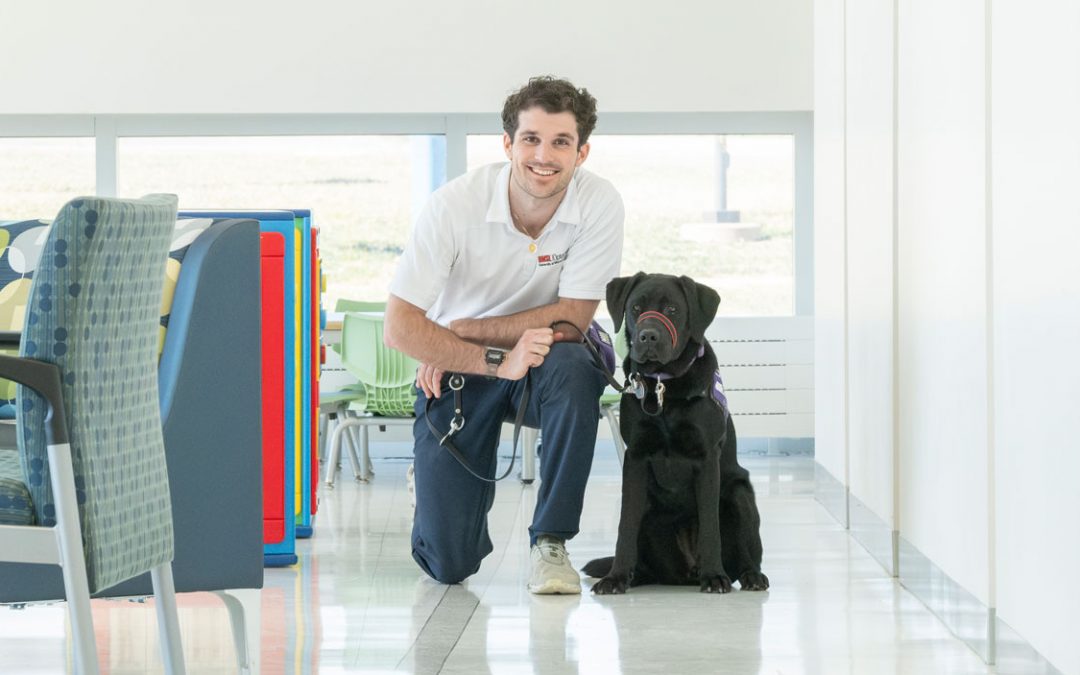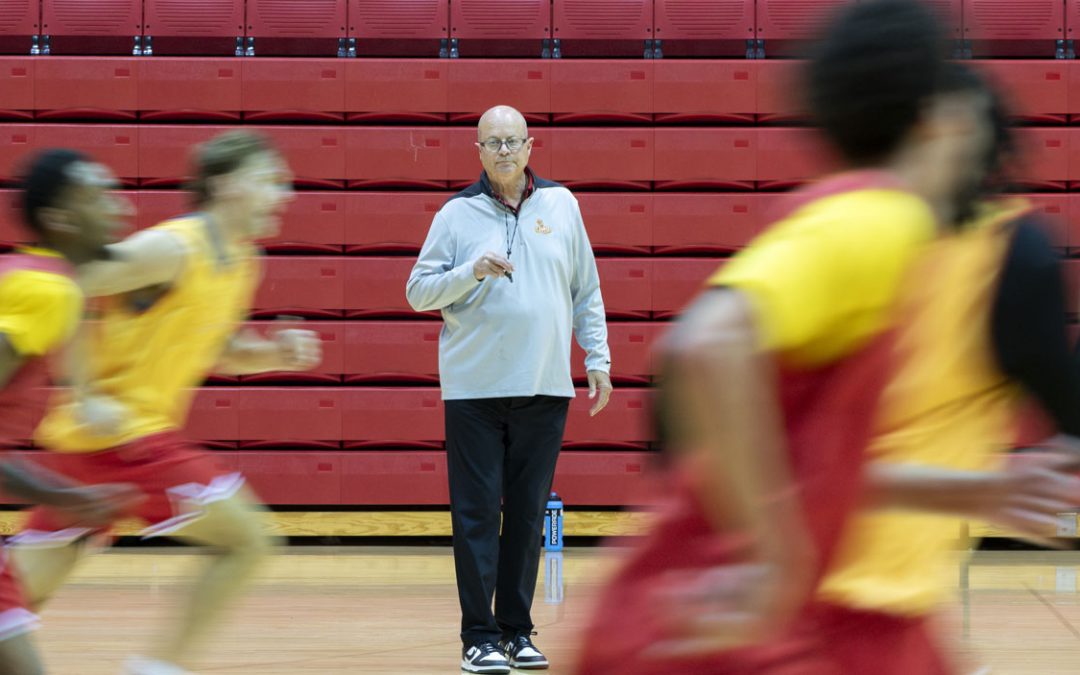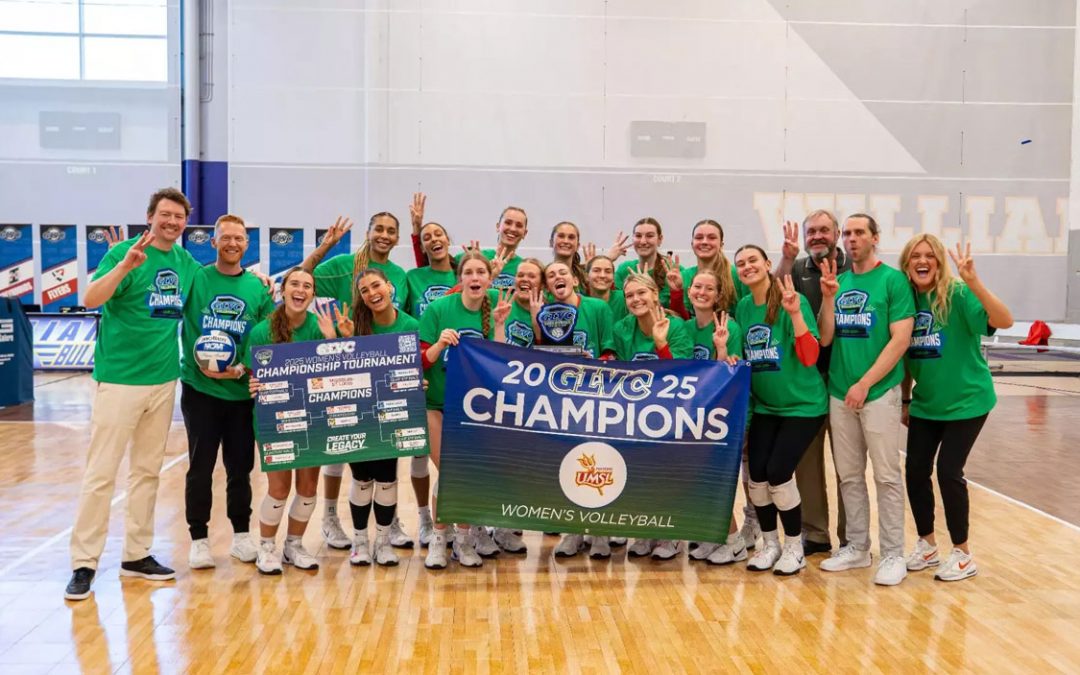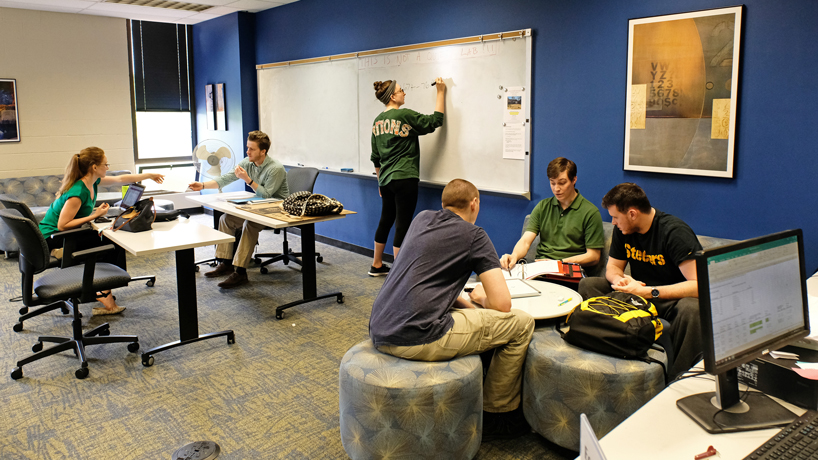
Meagan Burwell, center, works out a problem on the whiteboard inside the Economics Resource Center while, at left, Emma Nix and Harry Heyburn share notes, and at right, Mitchell Herbert (green shirt) receives help from tutors Andrew Tipping (blue shirt) and Jordan Lucas.. The Department of Economics set up the lab in the Social Science and Business Building to be a space for students to gather, work together and learn from each other. (Photos by August Jennewein)
Paige Steimel figures she spends about as much time inside the Economics Resource Center as anybody on the University of Missouri–St. Louis campus.
Sure, there are scheduled times on Monday and Wednesday evenings when she’s tasked with manning the tutoring desk, ready to help other students make sense of an assignment should they request it.
But there’s a good chance the sophomore economics major will be there anyway, parked in front of one of the computers or kicking back on a couch, when she’s not on the clock. It’s the place she naturally finds herself drifting toward in between classes or before she leaves campus to head home at night.
“It’s a good place to be,” Steimel said. “It’s quiet. I have friends that show up. There’s computers, so I can do my work. The tutors are there if I need help from them.”
She’s not alone.
“It’s really the hub of the econ department,” junior Meagan Burwell said. “I’m in there a lot as a tutor, but I also hang out in there often. People in all majors but especially econ majors go in there to work together on problem sets, use the whiteboards and work stuff out.”
That’s precisely how the faculty in the Department of Economics wants it.
The dedicated space in Room 452 of the Social Science & Business Building – conveniently just across the hall from the department office – predates the arrival of current ERC Manager and Professor Michael Allison in the mid-1980s.
It has undergone significant changes in its more than 30 years of existence, starting as a single classroom-sized space with a few tables for tutoring.
A National Science Foundation grant in the early 1990s allowed for the installation of a few computers and a server so the department could incorporate the technology into the curriculum.
Later on, the department reached an agreement with UMSL’s Information Technology Services to make it a full-fledged computer lab, and the removal of a wall allowed it to double its capacity.
Two years ago, it got a few updates with fresh paint, new carpet and new furniture.
Behind the tutoring desk are a mini-fridge and microwave that give students access to two more things they might need.
“We’re largely a commuter campus, so students can’t just go back to their dorms,” Allison said. “That’s not the way things work here, so it’s useful to give students a place to hang out, work together and study together.”
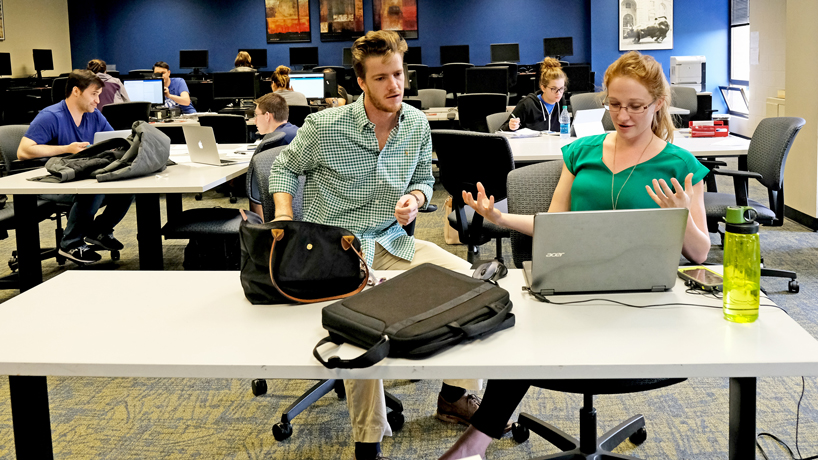
Harry Heyburn, left, and Emma Nix discuss the results from their final graduate econometrics project earlier this week in the Economic Resource Center.
When ITS first transformed it into a computer lab, the economics faculty insisted it keep some tables to allow students space to sit together and talk about assignments or share ideas.
At the top of the dry erase board, in what might as well be permanent red marker, it reads: “THIS IS NOT A QUIET LAB!!!”
Allison is happy whenever he drops in to find students working through problems together, either at the board or one of the tables, as he did one day earlier this semester when he encountered graduate student Matt Segrist with senior Jamie Vergano.
Faculty members such as Susan Feigenbaum promote the ERC as a resource where students of any major can go get help in their Principles of Economics courses. In his role as the department’s director of undergraduate studies, Allison also makes it a point to talk up the center’s benefits during his frequent individual meetings with economics students.
Segrist is something of an exception. He didn’t start spending time in the ERC until Allison recruited him to be a tutor there as a sophomore. But it didn’t take long before he, like Steimel, started gravitating there in his free time too. He regrets that didn’t happen sooner.
“I didn’t need it to do well in my classes,” Segrist said, “but from a social perspective, I think it would have been really cool to start connecting with people that I wouldn’t have connected with otherwise.”
He’s made up for it over the past four years.
Undergraduate and graduate students intermingle easily in the space, and older students share insights and opinions on different courses or professors. That knowledge comes in handy when it comes time for students to schedule classes for the following semester.
“I think it really helps with retention,” Allison said. “It makes the economics majors feel like they’re part of something, so they’re not just students who walk into class, take class, walk out. Economics faculty also stop by the ERC on occasion, which gives students one-on-one attention as well as a chance to get to know their professors a little bit better and vice versa. It is exciting to see cohorts develop – groups of students who like to take classes together, like to study together. This just makes them feel more comfortable.”



